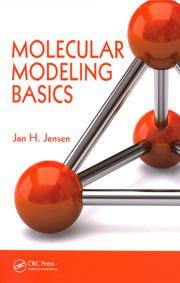Molecular modelling basics
Molecular modelling basics
Jan Jensen
Boca Raton, US: CRC Press 2010 | 189pp | ?29.99
ISBN 9781420075267
Reviewed by Henry Rzepa

Open almost any chemistry journal (and increasingly now the micropublishing variation, the blog) and the chances are high that you will encounter molecular modelling, where the theory of chemistry meets the reality of the lab. To understand the real world behaviour of molecules, you have to construct realistic models. Although the basic equations for doing so were derived some 80 years ago (see the famous quote by Dirac, the remarkable advances in computers have meant that access to modelling and the necessary computer (or iPad?) now can be easily afforded by any chemist. There is a lingering suspicion that not all who venture are entirely confident with the results and the layers of approximations that inevitably underpin the model.
It has become so easy to purchase a program (or nowadays download an app) and with it produce attractive pictures that understanding the underlying numbers is now the challenge. And numbers come from equations. The small book Molecular modelling basics by Jan Jensen is very much a primer for those who want to discover the equation behind the picture. In a mere 166 pages, a dizzying number of the mathematical concepts behind modelling are covered, and the equations are good value for money, with 252 set out and annotated with 125 figures. The accompanying text is inevitably succinct.
I got a lot myself from this concentrated dosage, but have to ask: who else is this book aimed at? Not, I suspect, experimental or synthetic chemists who want to know how that modelling program achieves its miraculous predictions. Certainly theoretical chemists wishing to broaden their horizons. But the former are warmly encouraged to dip into the wonderful blog that accompanies the book!












No comments yet